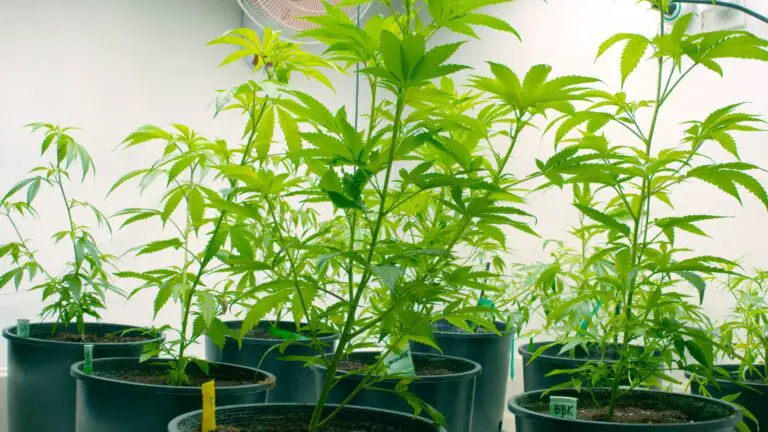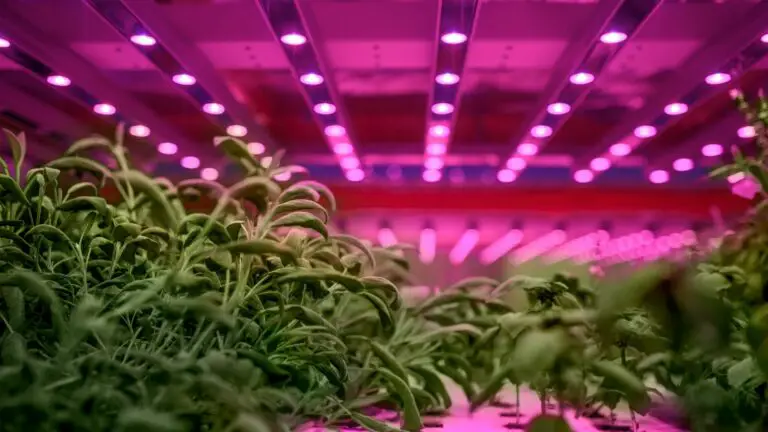7 Watering Tips for New Hydroponic Gardeners
Disclosure: Your purchases through our links may earn us a small commission, supporting our site’s ability to provide valuable information to our readers. Rest assured, it won’t impact your price. Thank you for your support.
Watering your plants may seem daunting if you are new to hydroponic gardening. But with some knowledge and simple tips, you can easily water your plants and keep them healthy and thriving!
This blog post will discuss seven watering tips for new hydroponic gardeners. By following these tips, you can create the perfect environment for your plants and ensure they get the water they need!
1. Always start with clean water.
This means that you should use filtered or distilled water for your plants. Tap water can contain chemicals and minerals that can build up in your hydroponic system and harm your plants.
To clean your hydroponic system, flush it out with clean water regularly. This will help remove any build-up that may harm your plants.
If you are using a watering can, rinse it well before each use. This will help remove any residual chemicals or minerals that could harm your plants.
It is important to start with clean water because it will help create the perfect environment for your plants and ensure they get the nutrients they need.
If you use tap water, be sure to flush out your system regularly and rinse out your watering can before each
Recommended products:
1.4L indoor watering can-Amazon’s choice
2. Water your plants regularly
Depending on the hydroponic system, you will need to water your plants daily, every other day, or weekly. Check the instructions with your system to determine how often you need to water your plants.
It is important to water your plants regularly to prevent them from drying out. When watering your plants, give them enough water to submerge the roots completely.
If you are using a drip system, check the emitters regularly to ensure they are working properly. If an emitter becomes clogged, it will not properly deliver water to the plant and may dry out.
Watering can help prevent harmful chemicals or minerals from harming your plants.
Related:
How Often Should You Water Seedlings in Rockwool Hydroponic?
How Often to Water Your Plants With the Kratky Method?
Watering hydroponic potatoes
Recommended products:
Smart water sprinkler with timer, Wireless Remote Control Irrigation System with Wi-Fi Hub Socket, and Water Flow Meter
Timers for Successful Hydroponic Gardening
3. Make sure that the roots of your plants are getting enough oxygen.
Oxygen is essential for plant growth and helps the roots absorb nutrients from the water. If the roots of your plants are not getting enough oxygen, they will start to suffocate and die.
You can do a few things to ensure that the roots of your plants are getting enough oxygen.
- Use an air pump: An air pump is a simple and effective way to ensure that the roots of your plants are getting enough oxygen. All you need to do is place the air stone in your reservoir and turn on the pump.
- Use a bubbler: A bubbler is a device that creates bubbles in the water. This helps to oxygenate the water and ensure that the roots of your plants are getting enough oxygen.
- Use an aerator: An aerator is a device that pumps air into the water. This helps to create a flow of water and oxygen that the roots of your plants can absorb.
Using one of these devices will help ensure that your plants’ roots are getting enough oxygen and are healthy.
If you notice that the leaves of your plants are turning yellow, it could be a sign that the roots are not getting enough oxygen.
Recommended products: air pump and air stone, solar powered air pump kit
4. Check the pH of your water.
The ideal pH for hydroponic gardening is between five and seven; but it vary with type of plant. You can buy pH test kits at most garden stores or have your water tested by a professional.
If the pH of your water is too high or too low, it can cause problems for your plants. If the pH is too high, it can make it difficult for the roots to absorb nutrients. If the pH is too low, it can make the water acidic and damage the roots of your plants.
It is important to test the pH of your water regularly and adjust it as needed. You can adjust the pH of your water by adding chemicals to it. You can always ask a professional for help if you are uncomfortable doing this.
Testing the pH of your water is a simple and easy way to ensure that your plants are getting the nutrients they need.
Related: How to Keep the PH Level of Each Hydroponic Growing Medium?
Recommended products:
Digital pH meter
Meter for pH, Temperature, Conductivity (Nutrient) in Water with Easy Calibration, Digital TDS Tester for Hydroponic System and Indoor Plant Grow
pH Controller with Monitoring and Dosing in Water Digital Meter for Hydroponic System and Indoor Plant Grow
5. Add nutrients to your water.
Nutrients are essential for plant growth and help plants absorb water more effectively. Many different nutrient solutions are available, so be sure to choose one formulated for hydroponics and organic.
Using a nutrient solution or fertilizer, you can add nutrients to your water. If you are using a nutrient solution, follow the instructions on the bottle.
If you use fertilizer, add it to your watering can before watering your plants. Be careful not to overdo it, as too much fertilizer can harm your plants.
Adding nutrients to your water will help your plants grow healthier and faster.
Related:
13 Nutrients Required for Hydroponic Plants
NPK for Hydroponics: How It Works and Why It Matters?
10 Advantages of Organic Hydroponic Nutrients in the Kratky Method
6. Monitor the temperature of your water
The ideal temperature for hydroponic gardening is between 68 and 72 degrees Fahrenheit. If the water is too cold, the plants cannot absorb nutrients properly. If the water is too hot, the plants will start to stress and may even die.
You can buy a water thermometer at most garden stores, or you can use an aquarium thermometer.
Monitoring the temperature of your water is a simple and easy way to ensure that your plants are healthy and happy.
Related: Does Grow Light Temperature Matter?
Recommended products:
Meter for pH, Temperature, Conductivity (Nutrient) in Water with Easy Calibration, Digital TDS Tester for Hydroponic System and Indoor Plant Grow
7. Check the level of humidity in your grow room.
The ideal humidity level for hydroponic gardening is between 40 and 60 percent. Too much or too little humidity can cause problems for your plants.
If the humidity is too high, it can cause the leaves of your plants to turn yellow and drop off. If the humidity is too low, it can cause the roots of your plants to dry out and die.
You can buy a hygrometer at most garden stores, or you can use a digital thermometer with a built-in hygrometer.
Checking the humidity level in your grow room is a simple and easy way to ensure that your plants are getting the moisture they need.
Recommended products: hygrometer, digital thermometer with a built-in hygrometer
Final Thought
Watering your plants is an essential part of hydroponic gardening; if done correctly, it can be easy and hassle-free. You can make the ideal environment for your plants and ensure they get enough water by following the seven watering instructions outlined in this blog article!
Thank you for reading!
Also, read:
11 Steps to Choosing the Right Fan for your Hydroponic Grow Rooms
How to Grow Kratky Method Plants: A Passive Hydroponic System



